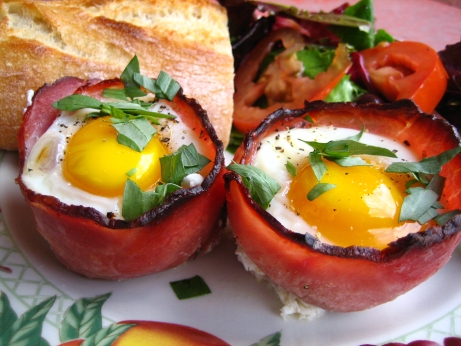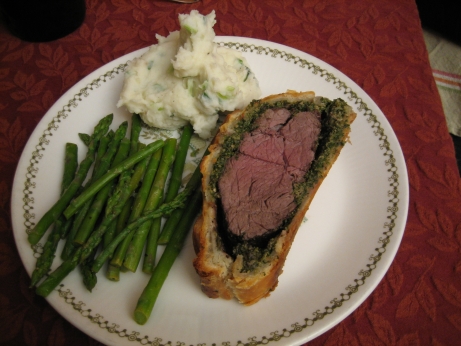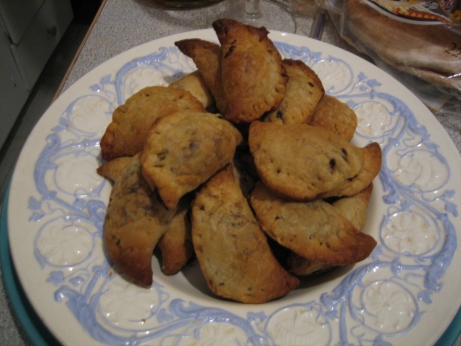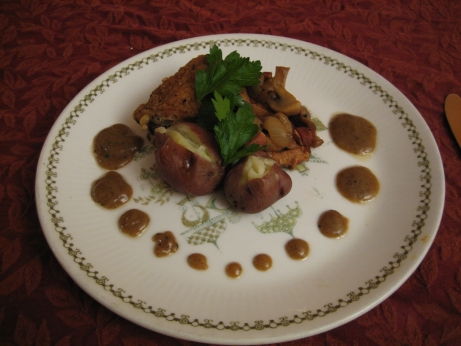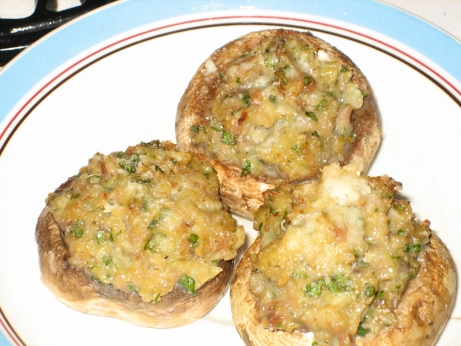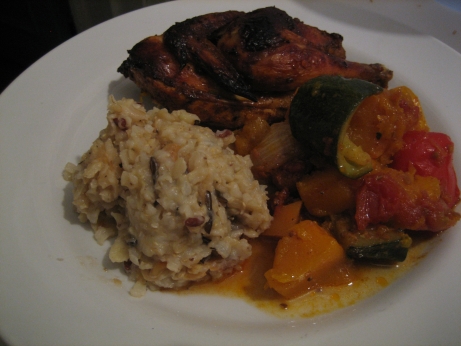
I messed this dish up quite badly, so badly I’m not sure it’s fair to count it. The main ingredient is 2 cups of wild rice, without further specification. I’m not a big rice eater, and I’d never cooked wild rice before. I went to the health food store and got two cups of the stuff in the bin labeled wild rice (riz sauvage). What I got was a mixture of rices, including wild. The wild rice grains are the long dark ones in the picture above, and the recipe should have been made entirely of those grains.
The rice is added to a pot of onions sautéed in olive oil, and left to toast for a few minutes. You then add chicken stock and water and simmer it for 1 – 1 1/4 hours. When the rice is ready you stir in some sliced almonds toasted with butter, as well as some salt and pepper. The flavours were pretty good here, nice standard pilaf fare. I like pilaf a lot, and make it often. I usually add mushrooms and diced red pepper, but the pilaf base was solid and tasty. The real problem was the rice. I followed the wild rice instructions with my non-wild rice mixutre and when I checked it after 45 minutes it had turned to gooey gummy mush. It was rice pilaf pudding. That’s to be expected given that I blatantly ignored the instructions, but I’ve decided to include the recipe as an honest mistake rather than a re-do. There are potentially many products labeled wild rice out there, and The Book didn’t help me to clarify the issue. It looks like Teena at the other gourmet project also used a wild rice mix (although she knew what she was doing and cooked it for less time) so I’m not alone in this.
If I’d cooked things properly it would have been a fairly tasty side. It quite subtly flavoured as it was, and the wild rice has a much more pronounced flavour than the other types. I worry that the flavour of the wild rice might have overwhelmed the dish, but I’m not really in a position to make that judgment. My version was mushy and bad, but that’s probably not the recipe’s fault.
